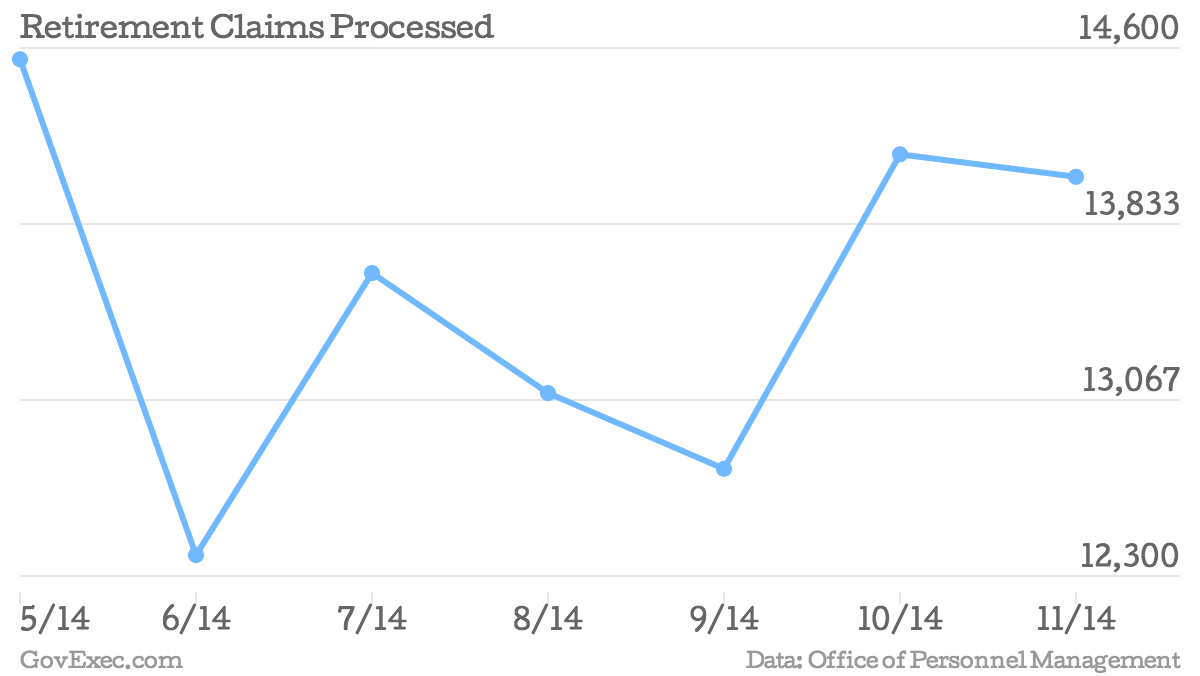Retirement Claims Backlog Progress Plateaus
The agency is preparing for an influx of 19,000 new applications in January, adding considerably to its inventory.
After making progress earlier this year on eliminating the retirement claims backlog, the Office of Personnel Management is now back to where it was at this time last year, according to the latest statistics.
The backlog of retirement claims filed by federal employees was at 14,039 by the end of November, down slightly from 14,137 in October. In November 2013, the claims backlog stood at 14,134 applications – 95 more applications than in the current queue.
OPM won’t eliminate the decades-old backlog by the end of the year, as it had hoped. OPM originally attempted to eliminate the backlog by the summer of 2013, but sequestration forced the agency to scale back its ambitions. The agency expects an influx of 19,000 new retirement applications in January 2015, which it estimates will increase the retirement backlog to 21,642 claims at the start of next year. In January 2014, the backlog was at 21,296 retirement claims.
October’s influx of retirement claims – 10,155 new applications that month alone – increased the backlog by nearly 1,400 claims and reversed steady progress that the agency made over the summer. The spike in new applications in October was partially due to a buyout at the U.S. Postal Service. Retirement claims typically spike in January and then settle to lower levels for the rest of the year.
Still, the latest OPM numbers show a little progress: The agency reported that it processed 83.4 percent of the claims it completed in November in 60 days or less. The agency received 1,854 fewer new applications than it expected in November. But it also processed 1,956 fewer claims than it projected for the month.
Clearing up the retirement claims backlog has been an ongoing struggle for OPM and a constant source of frustration for federal retirees and members of Congress, who are hearing lots of complaints from their constituents.
(Top image via charnsitr / Shutterstock.com)





